Archaeologists are attempting to conduct a Carbon test to discover the actual dating of the Anula Tissa Pabbata Vihara discovered last week in the Mihintale area.
If the archaeologists are capable of finding carbon remains, they would send it for a Carbon test, where the actual dates of the monastery can be discovered.
The Vihara is confirmed through literary sources such as Chapter 36 of the Mahavamsa:
“In the east the king [King Kanitthatissaka] built the Anulatissapabbata (vihara) in Gangaraji, the Niyelatissarama and the Pilapitthivihara as well as the Rajamahavihara.” - Chapter XXXVI The Thirteen Kings, Mahavamsa (Wilhelm Geiger, 1912)
The discovery of archaeological evidence for this nunnery also provided evidence for the existence of a large Buddhist nunnery in Ancient Sri Lanka.
“We did not have evidence for a large Buddhist nunnery in Sri Lanka, but now it is revealed that such a nunnery existed”, Dr. Anura Manatunge, the Director General of the Archaeological Department told Timesonline in an exclusive interview.
The name has been confirmed by an inscription which refers to the monastery as “Anula Tissa Pabbata Vihara”, leading to the assumption that the relics discovered in the stupa might be of Sri Lanka’s first lady Arhat, Anula Theri.
The area, around 40 acres, is mentioned in folklore as to have been used by Bhikkunis including Anula Theri, who was a pioneering character in establishing female Buddhist ordination in Sri Lanka.
The stupa has been constructed upon a stage built upon a natural rock plateau, while the surrounding has been revealed to have housed a monastery as revealed through the stone pillars.
The stupa is speculated to have been constructed with a “Yupasthamba”, an umbrella-like structure built on top of the stupa, instead of the later “koth kerella”.
The site can be visited by travelling two km along the A9 road from the Mihintale town, turning right and travelling 800 m on a gravel road. The site would be 200 m after reeching the Grama Shakti Samithi Building.
The inscriptions were written in Later Brahmi script, by King Kanittatissaka and King Mahasen, mentioning donations given to the nunnery, a few centuries after the actual lifespan of Anula Maha Theri, who lived in the reign of King Devanampiyatissa.
Dr. Manatunge speculates that the nunnery was named after the Theri after being constructed by King Kanittatissaka.
The inscription written by King Mahasen is in regard to an offering to the “Anulatisapavata”in his third year (279 AD), where he had offered paddy fields. Further descriptions on the villages the fields belong to and the amount offered are mentioned.
This would imply a possible Mahayana Buddhist influence of the nunnery, which is also revealed to have been related to the Abhayagiri monastery of Anuradhapura.
Dr. Manatunge who visited the site had suggested for a museum to be constructed on-site consisting of the items found in the excavations.
The Archaeological Department is to restore the stupa at Anula Tissa Pabbatha Vihara “as it is", Dr. Anura Manatunge, the Director General of Archaeology said.
Dr. Manatunge said that the entire ancient nunnery would be “developed with archaeological principles”, and a nunnery also constructed beside it for Buddhist nuns, by funding of the Vice Chancellor of the Nagananda Buddhist University and the Chief Sanghanayake of Taiwan, Ven. Chandima Bodagama Thero.
The Anuradhapura excavation officer, A. A. Wijayaratne stated that they had conducted excavation activities from January 2022 and are still continuing it.
The land was already owned by the Archaeological Department through a gazette in 1926, which had a hill with trees growing on top. First stage excavations were started in January 2022 due to a possibility that the hill may be a stupa.
Monetary activities were coordinated by the Chief Incumbent of the Mihintale Raja Maha Vihara, Ven. Walawahelunuwewe Dhammaratana Thero, monetary funding provided by Ven. Bodagama Chandima Thero and headed by North-Central Province Governor, Mahipala Herath.
By April 8, the Archaeological Department was capable of revealing the four corners of the stupa but had to halt the excavation due to the economic crisis.
The excavations were restarted on September 12, with the involvement of the Anuradhapura excavation division, where they were able to discover the relics and other pottery items, beads and metal jewellery. The excavation is in its final stages currently.
However, Mr. Wijayaratne expressed his distress over “illegal excavators”, who had dug the center of the stupa and obtained gold as well as any material of value from the site.
By Senuka Jayakody
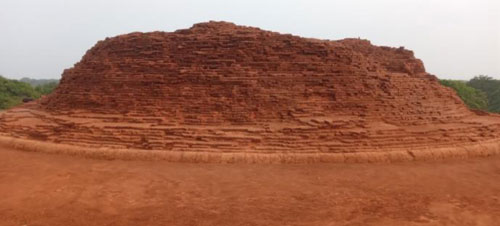

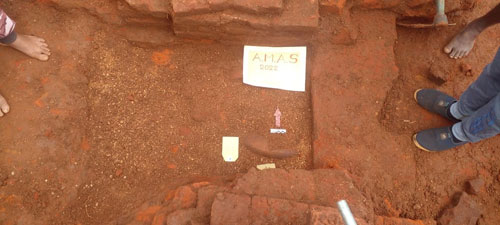

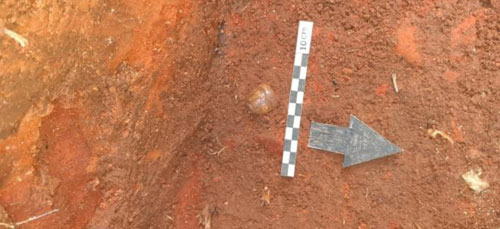
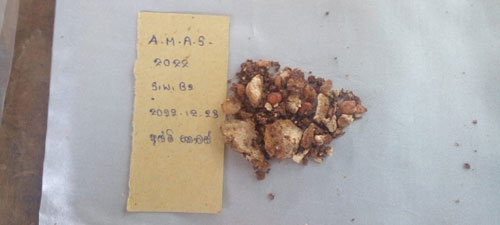

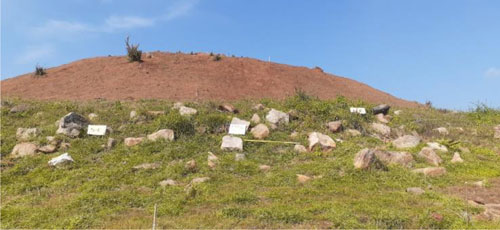
Leave Comments